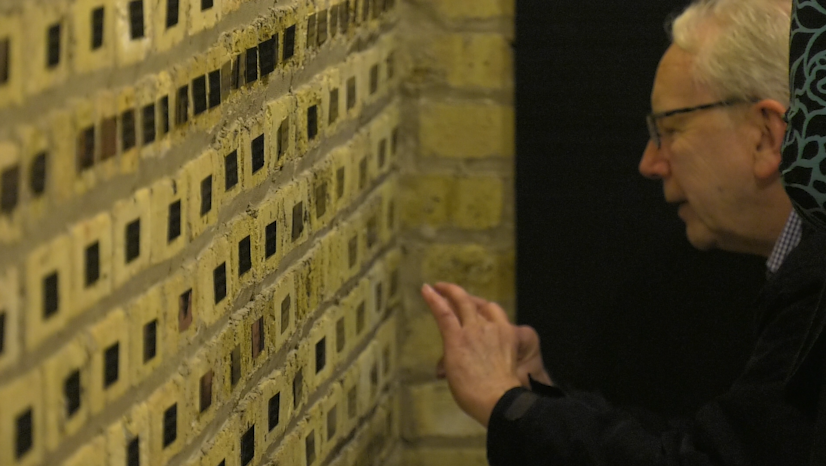Alan Hagstrom visited the Swedish American Museum on Tuesday and didn’t expect to find what he saw.
“I walk into the room of the display and lo and behold,” says Hagstrom. “There are my grandparents highlighted on the immigrant wall.”
Edward John and Hilda Marie Hagstrom are just two of his four grandparents featured on the Immigrant Wall of Honor, a golden brick-wall that honors immigrant ancestors at the Swedish American Museum in Andersonville.
[vimeo 166223689 w=474]
The museum also features an exhibit, The Dream of America: Swedish Immigration to Chicago, which highlights the struggles and triumphs of the immigration journey to Chicago. More than 100,000 Swedish Americans lived in Chicago in the early 1900s, making it the second largest Swedish populated city in the world at the time, according to the Swenson Swedish Immigration Center.
“When the Swedes came over back in the 1850s and 1930s, they formed churches and organizations in Andersonville,” says Karin Moen Abercrombie, executive director of ten years at the museum. She added that these people who congregated in the neighborhood are the reason for its location.
The museum started in 1976 and moved to the current building — originally a Swedish family-owned hardware shop — in 1987. Leaders in the Swedish community say they are proud of how far it’s come.
“We hope to continue to keep the roots of the Andersonville neighborhood alive,” says Abercrombie.
They also opened the Brunk Children’s Museum of Immigration in 2001 to create a way for children to interactively learn about immigration and “not just read about it.” They participate in plays and activities that reenact historical scenes.
“It’s about immigration and leaving your home country to start in a new country,” Abercrombie says.
2016 marks the 40th anniversary of the Swedish American Museum and the 15th anniversary of its Brunk Children’s Museum of Immigration. They’re expecting 50,000 people to join them in celebrating Swedish culture and tradition at the Midsommarfest on June 11 and 12.


